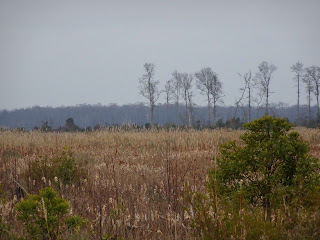The
Foothills Parkway might be the least well-known of the ten National Parkways
that include popular drives such as the Blue Ridge and the Colonial Parkway;
probably because it’s the only one of the congressionally mandated parkways
that remains unfinished! When completed, the 72-mile parkway will connect US
Route 129 and the Little Tennessee River on the west end with I-40 and the
Pigeon River in the east, winding through the northern foothills of the Great
Smoky Mountains for its entirety.
Authorized
in 1944, about 22.5 miles are complete and open to the public, crossing a
series of high ridges with views of Great Smoky Mountains National Park to the
south and the Tennessee Valley to the north. The longest section is the 16.5
mile segment on the west end that connects US 129 with the town of Walland. Another
6 mile section connects US 321 in Cosby to I-40 in Pigeon River valley, and on
the east end the Gatlinburg Bypass links the north end of Gatlinburg with the
Great Smoky Mountains Parkway.
On our
return trip from Sweetwater TN we elected to take the more direct route back to
Upstate SC, one that would add a couple of hours to our travel time but take us
on a more direct path home, cutting between Great Smoky Mountains National Park
and Nantahala National Forest. This course took us to the western terminus of
the Foothills Parkway on the Little Tennessee River.
 |
| Look Rock tower |
It is
11 miles from US 129 to Look Rock, the highest point on the Parkway that has 360-degree
panoramic views of the mountains. Look Rock features a picnic area and a campground,
but the highlight is the observation tower. From the south Look Rock parking
lot (Southwest Parking #6) the ½ mile trail crosses the road and then gains
altitude as it scales the ridge. Just before reaching the concrete tower hikers
pass the air quality monitoring station which (I believe) is where the Look Rock webcam is located. Note that the enclosed portion of the tower is not open to the public
There
is a natural ledge on the south end of the parking lot that does not require
hiking, but it only offers views in one direction. Still, it will give you a
good idea of visibility at the tower, which due to pollution (and on our visit,
rain) can be rather severely impacted at this high altitude. On a clear day you
can easily see Mt. LeConte and Clingmans Dome (29 and 26 miles away, respectively),
and possibly Mt. Guyot (40 miles away). Cades Cove is only 8 miles away,
although to reach it takes over an hour (and a 30+mile drive) around through
Walland and Townsend.
 |
| View south from parking lot |
An
additional portion of the parkway is scheduled for completion this June; the Walland to Wear's
Valley section that will add another 16.1 miles. Under
construction since the 1960s, structural fill failures and environmental/erosion
concerns have plagued the project since the very beginning. Construction was
halted in the 1980s with just a 1.65 mile segment remaining unfinished; nine
bridges were required to span the series of steep ravines in it, and the ‘missing
link’ as it came to be called is finally nearing completion. As for the rest of
the Parkway, Park officials say that the last three segments have not even entered
the planning phase.
There
are multiple other pull-offs that showcase the grandeur of the
foothills along the west end of the parkway, every view seemingly better than the last. Similar to Skyline Drive or the Blue Ridge Parkway, each season brings something new to the view - in autumn this is
a far less-crowded route to see spectacular fall foliage. On this particular trip the spring
buds and blooms were not yet visible, but without leaves on the trees the views
were less obstructed. Reluctantly we
retraced our steps back to the Little Tennessee River and highway 129, with the
curviest section of our journey still ahead; to reach North Carolina we would
have to traverse The Dragon…



















































